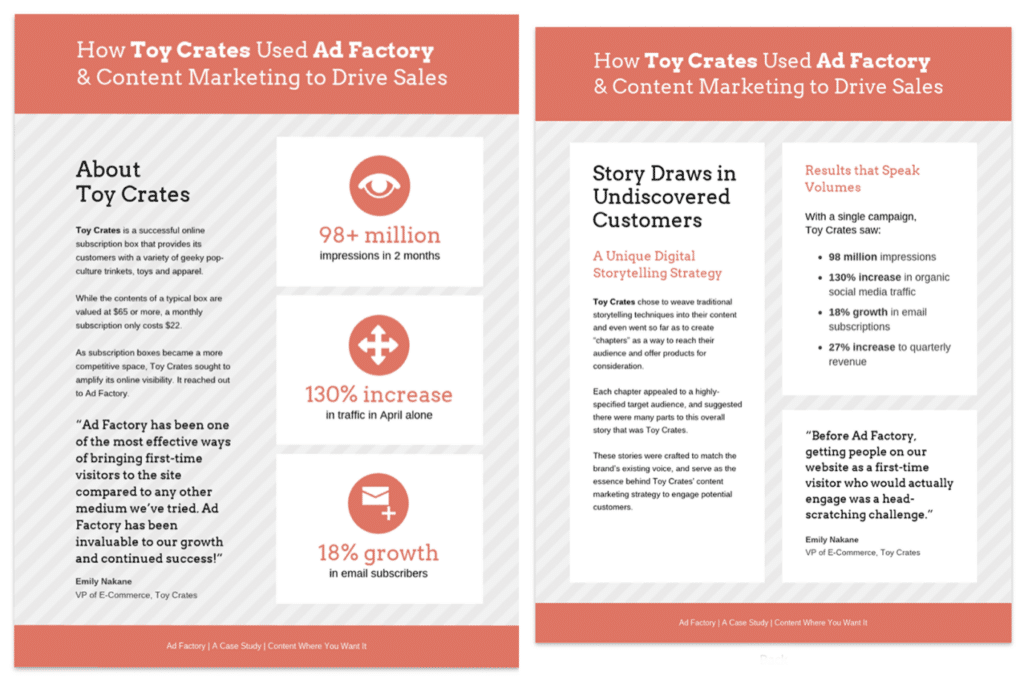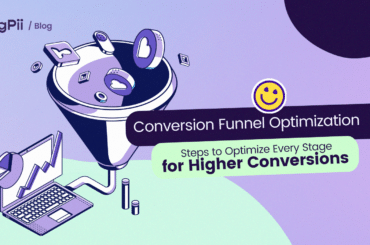Most product launches fail within the first year of launch.
And did you also know that this high failure rate often gets attributed to a lack of understanding of consumer needs and preferences?
This is where qualitative data comes in.
Qualitative data is a powerful tool that can provide insights into the human experience, allowing businesses and researchers to understand their customers better and make informed decisions.
This article will explore the importance of qualitative data and its role in generating new ideas, improving products, and, ultimately, driving business success.
We will also provide real-life qualitative data examples. So, whether you’re a business owner, marketer, or researcher, keep reading to learn why qualitative data should be a critical part of your strategy.
What is Qualitative Data?
Qualitative data is a broad term that refers to non-numerical information collected through interviews, observations, and other means. This type of data differs from quantitative data because you can’t measure it numerically.
Qualitative data can take many forms, including:
- Observations or interviews with customers or employees,
- Written or spoken feedback from customers,
- Customer satisfaction surveys
Qualitative research methods are ideal for better understanding human behavior, attitudes, and beliefs. You can also build theories to test later on through quantitative methods.
And when you use both qualitative and quantitative data together, you’ll have the upper hand if the goal is to create statistical models.
Let’s have a look at some qualitative data examples and talk about its importance in more detail.
Importance of Qualitative Data
1. Provides an in-depth understanding
Detailed and descriptive analysis
Qualitative research allows you to explore deeper issues that are more difficult to quantify, such as attitudes, behaviors, and opinions.
You can use it to discover:
- What consumers think about your brand or product
- How they feel about it
- Why they make certain decisions
An excellent example of how qualitative data helps marketers make better decisions is that it enables them to understand why consumers respond negatively to a product feature or promotion.
For example, if sales have dropped following a new promotion, qualitative research can help determine whether this was due to poor design or timing of the campaign or whether consumers simply disliked the idea behind the promotion itself.
Take McDonald’s Market Research, for instance.
As part of their efforts to expand their customer base, McDonald’s conducted market research to gather customer feedback. This involved asking critical questions about their best-performing products, pricing, effective ads, and popular restaurants. They could see if they were reaching new customers by analyzing the answers.
Moreover, McDonald’s also collected customer feedback on their products. They discovered that some customers were unhappy because they wanted healthier options. As a result, they added healthier items to their menu and started an advertising campaign to inform customers that their meat was genuine.
Contextualizes data
Qualitative data is like the “behind-the-scenes” information that helps us understand complex things better. It’s important because it gives us a more in-depth understanding of the subject being studied by providing additional insights we can’t get from just looking at numbers.
For example, let’s say we want to understand the impact of a new educational program on students’ academic achievement.
Quantitative data, such as test scores and grades, can tell us if there has been an improvement or decline in students’ performance.
However, qualitative data can provide additional context and understanding of the factors contributing to the results.
By conducting interviews with students, teachers, and parents, we can learn about the learning environment, the teaching methods, and other factors influencing the results.
Pro Tip: Use AI-based analytics tools to uncover qualitative data and contextualize user behavior.
For example, FigPii helps contextualize data by providing qualitative data collection features like feedback, surveys, and user testing. These tools allow you to gain deeper insights into user behavior and preferences, helping you make accurate data-driven decisions that drive business growth.
2. Uncovers unexpected findings
Qualitative data is a less structured form of information than quantitative data. It often consists of words, experiences, and other forms of unstructured material.
Qualitative researchers use this type of data to understand the meaning behind the numbers or to discover things that might not be apparent in the numbers or statistics.
Here’s how:
Identifies new areas of inquiry
You’re writing a research paper, and you’ve got some great data. You’ve done your best to make sense of it, but you’re unsure what to make of the findings.
You might be wondering if there’s more to discover in your data. Could there be hidden insights that you haven’t uncovered yet?
Qualitative data helps you discover new insights by identifying new areas of inquiry and examining relationships among the elements in the data set.
For instance, this qualitative report below gives you the bounce rate from all the site pages, along with the most visited pages with a high bounce rate.
(Source)
Using this new information, you can work on those pages to let users stay on them and then convert them into customers.
In qualitative research, we also often uncover surprising findings that weren’t expected at all.
This can happen for many reasons.
Participants tend to give more honest answers when they don’t feel like researchers are judging them.
Or, participants may have been afraid to say certain things in public (like during a focus group) but felt more comfortable answering questions in private.
Or our expectations about how people behave might be incorrect because we don’t know enough about them yet.
Qualitative researchers can use this type of analysis to:
- Identify patterns in unstructured interviews or focus groups.
- Find themes in observation notes.
- Understand why people did what they did in a particular situation.
For example, imagine a study conducted to examine the reasons behind high employee turnover rates in a company. The quantitative data may have shown that employees were leaving due to low pay or lack of benefits.
However, by collecting qualitative data through interviews or focus groups, researchers may have uncovered that employees were leaving due to a toxic work culture or a lack of support from their managers. This new information could lead to additional research questions and areas of exploration that may have otherwise been missed.
Can challenge preconceived notions
Qualitative research can challenge preconceived notions because it allows you to explore things that traditional methods can’t measure.
For example, imagine you are working on a sustainable energy project and want to learn how people feel about using solar power in their homes. You could analyze their answers using statistical techniques, but this may not give you an accurate picture of what people think about solar power because many people won’t respond honestly to a survey question like this.
Instead, you could interview them and ask them specific questions about their feelings about solar power (i.e., “How do you feel about installing solar panels on your roof?”).
3. Captures perspectives and experiences
Unlike quantitative data, which provides a numerical value to data that you can analyze statistically, qualitative data allows researchers to delve into individuals’ subjective experiences and perspectives.
Here’s everything it allows:
Allows for exploration of diverse viewpoints
Qualitative data often entails observations, interviews, focus groups, and other forms of research. They also use observation techniques such as direct or participant observation, in-depth interviewing, document analysis, and content analysis.
This level of research naturally paves the way for diverse viewpoints inherent in human experience.
One example of how qualitative data can capture perspectives and experiences is Starbucks’ approach to gathering customer feedback.
For starters, Starbucks asks buyers to share their feedback on their official site and share ideas through Twitter. They supervise social media, track cultural trends, and even allow buyers to test their products in the stores.
(Source)
They also have the My Starbucks Idea platform to gather ideas and incessantly enhance their products. Additionally, Starbucks has implemented more than 275 customer ideas that include recommendations about new products and methods to improve business responsibility.
These methods allow Starbucks to capture diverse perspectives and experiences, facilitating decision-making and helping them improve their products and customer service.
Acknowledges the subjectivity of human experiences
Individuals have unique experiences and viewpoints that cannot be fully captured through objective measures alone. And qualitative data recognizes that.
For example, Pew Research Center found that while most Americans use social media, their experiences and opinions about its impact on society vary widely based on their age, political affiliation, and other factors.
(Source)
This is a testament to the fact that it’s important to consider subjective human experiences, especially if you’re making decisions that directly affect your target audience.
By engaging with participants in a more exploratory and open-ended way, researchers can discover new insights and perspectives that may have been overlooked with more rigid quantitative methods.
4. Allows for the development of hypotheses
Qualitative research helps you to understand what motivates your customers or users. This information can help you to develop hypotheses about what they want from your product or service and how they might use it.
For example:
You may have noticed that many people use Instagram to share photos of food with friends and family members who live far away (or even those who don’t). You could hypothesize that these users want an easier way to send photos of food than emailing them one at a time whenever someone wants one sent (and then waiting for each recipient to reply).
Or maybe you believe that many users would like an app that would allow them to read news stories from multiple sources all in one place.
5. Can complement quantitative data
When we talk about data, most of us refer to quantitative data. Quantitative data is numerical and measurable. Qualitative data, on the other hand, is subjective and qualitative. It’s not easy to put into numbers and measure with a ruler or a scale.
However, you can use qualitative research in conjunction with quantitative data to provide context for your results.
For example:
- If you’re testing out a new feature on your website, it would be useful to know how people feel about it by asking them directly with a survey.
- If you’re trying to understand why people are leaving your site after visiting one particular page, does this mean the content on that page needs improvement? Or does it indicate that users aren’t happy with their experience on the site in general?
Combining qualitative and quantitative research methods together gives you a better understanding of what’s happening behind the scenes of your product or service and make decisions based on real feedback from real customers rather than just guessing what they might want or need next time around (which is basically what most companies do).
Lego is an example of a company that combines quantitative and qualitative data.
(Source)
Lego uses quantitative data to measure sales, market share, and customer satisfaction.
In addition, they utilize qualitative data to explore user needs, expectations, and creativity. By asking customers what they like about Lego products, how they use them, and what they want to build with them, Lego gains qualitative data insights to guide its product development and marketing efforts.
By combining quantitative and qualitative data, Lego is able to create products and experiences that their customers love and drive their business success.
Qualitative Data Collection Methods
1. Interviews
Interviews are one of the most common ways to collect qualitative data. A good interview can be as simple as a conversation between two people or more formal and structured.
In either case, interviews involve asking someone questions to gain insight into their experiences and opinions.
The following are some examples of how you might use interviews in your research project:
- To find out what people think about a specific topic or issue (e.g., “What do you think about recycling?”).
- To gather information about how people behave in certain situations (e.g., “Tell me about a time when you had trouble paying for groceries”).
- To learn about people’s experiences with products or services (e.g., “What did you like/dislike about your last visit to the bank?”).
One-on-one interviews
A common way to collect qualitative data is through in-depth, one-on-one interviews.
In this method, you will interview a few people (usually five or fewer) and ask questions about your topic.
You can use different questions, such as open-ended and closed questions. However, the most important thing is to keep the conversation flowing naturally to feel like a conversation between two people instead of an interview.
The major disadvantage of this method is that it’s time-consuming because each interviewer must find people willing to participate in interviews. It can also be difficult for interviewers to keep track of all the information they gather from participants over multiple sessions.
Group interviews
Another way to gather qualitative data is by conducting group interviews. In this method, you will gather a large group of people together and ask them questions about your topic.
The group should consist of people who have similar opinions and experiences with the topic. This allows them to discuss their thoughts openly and freely without worrying about offending others or appearing foolish.
2. Focus groups
Focus groups are one of the most popular methods of qualitative data collection. This method involves bringing together a group of participants, usually 6-10 people, to discuss a particular topic of interest in a facilitated discussion led by a trained moderator.
The moderator guides the discussion by asking open-ended questions and encouraging participants to share their opinions and experiences. The goal is to gather in-depth information on a particular topic by exploring participants’ attitudes, beliefs, and perceptions.
Some of the steps involved in conducting a focus group are:
- Define the purpose and objectives of the focus group
- Identify and recruit the relevant participants and representatives of the target population
- Prepare a guide or a list of questions that will facilitate the discussion
- Select a moderator who will lead the discussion and ensure that all participants have a chance to speak
- Choose a suitable venue and time that are convenient and comfortable for the participants
- Record and transcribe the focus group discussion
- Analyze and interpret the data using thematic analysis, content analysis, or other qualitative techniques
- Report and disseminate the findings and recommendations.
This method is beneficial because it allows you to collect data from people representing various demographics such as age, gender, and income level. This provides insights into how different demographics respond to your product or service offerings.
Focus groups also allow participants to learn more about your company and its offerings while getting direct feedback from real customers on what they like and dislike about your products or services.
Focus groups have played a significant role in the development of iconic products like Barbie. In the 1950s, Mattel used focus groups to gather feedback from young girls and design a doll that captured their imaginations and became a cultural phenomenon.
More recently, in 2014, focus groups led to the introduction of a “curvier” Barbie, reflecting changing attitudes and preferences.
(Source)
By listening to the feedback of a diverse group of participants, Mattel was able to adapt its product line to meet its customers’ changing attitudes and preferences.
3. Observations
Observations are a common method of collecting qualitative data. An observation is simply a systematic collection of information about some phenomenon in the world.
You can observe people in their natural settings and record your observations in a journal or other written form. You may focus on one person or group, or you might study several people or groups.
Some examples of observation in qualitative research include:
- A researcher observing a classroom of students to understand how they interact with each other and the teacher.
- An ethnographer observing a community to understand their cultural practices and beliefs.
- A psychologist observing a patient’s behavior during therapy sessions to understand their thoughts and emotions.
One way to observe user behavior is by recording sessions and analyzing them later, but it can be time-consuming.
However, there are automated session recording tools like FigPii that let you record sessions and give you a glimpse into how your visitors behave on your site.
These tools make it easy for researchers to identify and analyze key themes and patterns in the recordings. This approach provides detailed insights into human behavior, leading to better decision-making.
4. Case studies
Case studies are one of the most common methods for collecting qualitative data. A case study is a detailed examination of an individual or group, usually preceded by extensive planning and preparation.
For instance, below is a snapshot of the case study of how Troy Crates used Ad Factory and content marketing to drive sales.
(Source)
The researcher observes the target group for some time, usually months or years, before collecting any data.
This allows them to become familiar with how things operate within the group. This also means that when they begin collecting data, they will understand how things work naturally without having to ask people questions on every topic that arises during their observations.
Limitations of Qualitative Data
Qualitative data is a valuable resource for researchers, but it has its fair share of limitations.
Here are some of the common ones:
Time-consuming and labor-intensive
Qualitative researchers spend a lot of time interviewing people and observing their behavior, but they also spend time analyzing the results and writing up their findings. This can make it difficult to manage your time effectively when you’re trying to do other things, such as getting a degree or working full-time.
Difficulties in data analysis
Qualitative data analysis is also difficult because it requires you to make sense of things that aren’t necessarily quantifiable. For example, if you’re doing an ethnographic study, then you might have to figure out what people mean by certain words or phrases in their everyday language. This can be frustrating because there’s no easy answer — each person may interpret those words differently.
The subjectivity of data
Finally, qualitative data is subjective by nature; it’s based on people’s perceptions of reality instead of objective measurements like weight or volume.
This means that two people might interpret the same thing differently based on their own experiences and backgrounds. Each person’s opinion about something will be unique based on his background knowledge, opinions, and attitudes about the topic.
Wrapping up: The Power of Qualitative Data in Driving Business Success!
In this article, we discussed the importance and examples of qualitative data analysis. Qualitative data provides valuable insights into the human experience, helping businesses and researchers make informed decisions.
By understanding their customers’ attitudes, behaviors, and preferences, businesses like yours can create better products, develop effective marketing strategies, and, ultimately, drive business success.
From focus groups to observations, there are many qualitative methods that you can use for research objectives. And with the help of modern technologies such as FigPii, analyzing qualitative data has become easier and more efficient than ever before.










